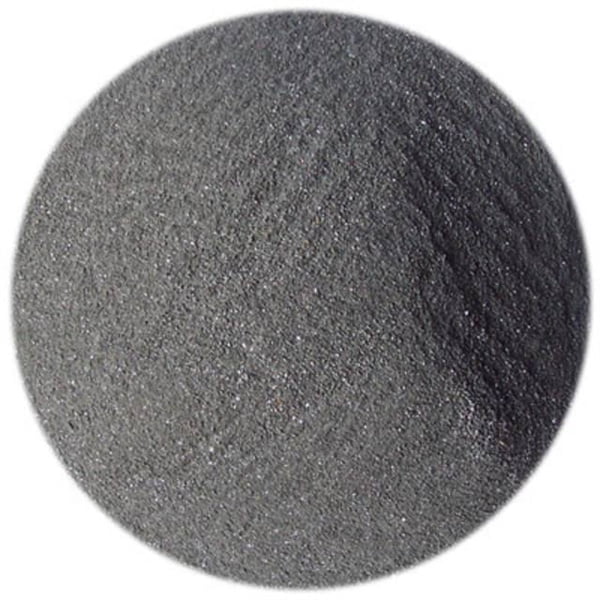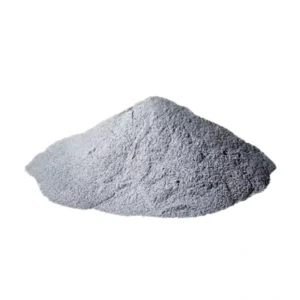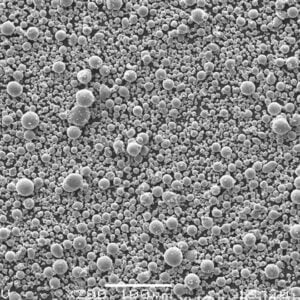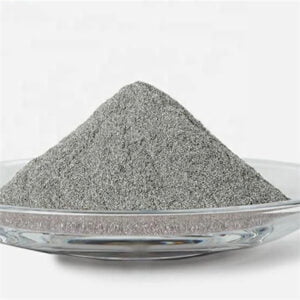Al 3203 powder
Al2O3 powder is an aluminum alloy composed of aluminum, copper, and manganese. It is renowned for its excellent strength and high fatigue resistance, making it an ideal choice for demanding environments and structural components. The precise composition and manufacturing process of Al 3203 powder ensure consistent quality and performance, making it a reliable material for numerous applications.
Low MOQ
Provide low minimum order quantity to meet different needs.
OEM & ODM
Provide customized products and design services to meet unique customer needs.
Adequate Stock
Ensure fast order processing and provide reliable and efficient service.
Customer Satisfaction
Provide high quality products with customer satisfaction at the core.
share this product
Table of Contents
Overview of Al2O3 Powder
Al2O3 or aluminum oxide is a ceramic material known for its high hardness, excellent dielectric properties, refractoriness, abrasion and corrosion resistance. Alumina powder is the powder form of aluminum oxide used in a variety of applications.
Key properties of Al2O3 powder include:
- High hardness and wear resistance
- High melting point of over 2000°C
- Low electrical and thermal conductivity
- Excellent thermal shock resistance
- Resistant to strong acids and alkalis
- Low density around 3.95 g/cm3
- Chemically inert material
- White color powder available in various particle sizes
Chemical Composition of Al2O3 Powder
Al2O3 powder has the following chemical composition:
| Compound | Formula | Weight % |
|---|---|---|
| Aluminum oxide | Al2O3 | 99.5% min |
| Silicon dioxide | SiO2 | 0.05% max |
| Iron oxide | Fe2O3 | 0.08% max |
| Titanium dioxide | TiO2 | 0.03% max |
| Sodium oxide | Na2O | 0.05% max |
| Magnesium oxide | MgO | 0.03% max |
High purity Al2O3 powder contains over 99.5% aluminum oxide as the principal component. Maximum impurity limits are specified for silica, iron oxide, titania, and other oxides.
Properties of Al2O3 Powder
Al2O3 powder exhibits the following key properties:
| Property | Value |
|---|---|
| Melting point | 2050°C |
| Density | 3.95 g/cm3 |
| Hardness | 9 Mohs |
| Flexural strength | 330 MPa |
| Compressive strength | 2600 MPa |
| Porosity | <1% |
| Thermal conductivity | 30 W/m.K |
| Electrical resistivity | >1014 ohm.cm |
| Dielectric strength | 15-35 kV/mm |
| Water absorption | 0% |

The very high melting point, hardness, strength, and dielectric strength make alumina suitable for applications like abrasives, refractories, ceramics, and electrical insulators. It has very low porosity and zero water absorption.
Production Methods for Al2O3 Powder
The common production methods for Al2O3 powder include:
- Bayer Process – Alumina trihydrate is extracted from bauxite ore and thermally converted to alumina powder. This process yields high purity powder.
- Hall–Héroult Process – Alumina is dissolved in molten cryolite and electrolyzed to produce aluminum. Alumina powder is recovered as a by-product.
- Calcination – Dehydration and calcination of various aluminum hydroxides to form alumina powder.
- Sol-gel – Alumina gel is formed from aluminum alkoxides or nitrates and then dried and calcined to make nanoscale alumina powder.
- Flame Pyrolysis – Vapor phase combustion of aluminum chloride produces ultrafine alumina powder.
The Bayer process is the most common industrial method while the others yield specialty grade alumina.
Applications of Al2O3 Powder
Key applications of Al2O3 powder include:
- Abrasives – For grinding, sanding, polishing, blasting media due to its hardness.
- Refractories – High temperature furnace linings, ceramics, firebricks for metallurgy, glass, cement industries.
- Ceramics – Electrical, structural, biomedical applications using alumina ceramics.
- Catalysts – Gamma alumina used as catalyst support and directly as catalyst.
- Coatings – Thermal spray coatings for wear and corrosion protection.
- Polishing – CMP slurries for polishing silicon wafers, optic components, metals.
- Fillers – Added to plastics, rubber, paper to improve mechanical properties.
- Cosmetics – For manufacturing makeup, personal care products.
Specifications of Al2O3 Powder
Al2O3 powder is available under various purity levels, particle size distribution, and grades:
- Purity – From industrial (90%) to high purity (99.99%) grades based on impurity levels.
- Particle Size – Ranging from nanoscale (10-50 nm) to coarse grade (over 100 microns).
- Phases – Alpha, gamma, theta, delta phases have different properties.
- Grades – Conforming to standards for abrasives, technical ceramics, bioceramics, etc.
- Surface Area – For nanosized powder, surface area is 1-100 m2/g.
- Morphology – Regular and spherical shaped particles preferred.
- Applications – Powder customized for composites, 3D printing, other uses.
Global Suppliers of Al2O3 Powder
Some of the major suppliers globally include:
- Almatis (USA)
- Baikowski (France)
- Nippon Light Metal (Japan)
- Sumitomo Chemical (Japan)
- Sasol (South Africa)
- Evonik (Germany)
- Micron Metals (USA)
- Nanoshel (USA)
These companies produce various grades of Al2O3 powder tailored for applications ranging from abrasives to nanotechnology.
Pricing of Al2O3 Powder
Pricing of Al2O3 powder depends on:
- Purity and grade
- Particle size and surface area
- Purchase quantity
- Powder characteristics
- Supplier and location
| Grade | Price Range |
|---|---|
| Industrial | $5-10 per kg |
| Technical | $10-50 per kg |
| High Purity | $50-500 per kg |
| Nanopowder | $100-1000 per kg |
In general, high purity, nanosized, specialized powders command premium pricing compared to industrial commodity grades.
Health and Safety When Handling Al2O3 Powder
Al2O3 powder does not pose severe health and safety risks but standard precautions should be taken:
- Use dust masks or respirators to avoid inhaling fine particles during handling.
- Wear protective goggles and gloves while handling powder.
- Prevent skin contact to avoid drying and irritation.
- Avoid generating and breathing airborne dust. Ensure adequate ventilation.
- Handle and store powder carefully avoiding dispersion in air.
- Properly dispose of waste powder based on environmental regulations.
- Refer to Material Safety Data Sheet (MSDS) provided by the supplier for complete health hazard data.
Inspection and Testing of Al2O3 Powder
Key tests carried out for quality control of Al2O3 powder are:
- Chemical analysis using X-ray Fluorescence (XRF) or Inductively Coupled Plasma (ICP) techniques to ensure composition meets specifications.
- Particle size analysis through laser diffraction or dynamic light scattering method.
- Scanning Electron Microscopy (SEM) to examine particle morphology.
- Specific surface area measurement using gas absorption technique.
- X-ray diffraction (XRD) analysis to determine phases present.
- Impurity analysis for trace metallic elements using ICP mass spectrometry.
- Loss of mass on ignition when heated to 1000°C.
- Density measurement through pycnometry method.
Thorough inspection and testing ensures the powder meets the quality and performance requirements of specific applications.
Comparison Between α-Al2O3 and γ-Al2O3 Powder
α-Al2O3 and γ-Al2O3 are two common phases of alumina powder compared here:
| Parameter | α-Al2O3 | γ-Al2O3 |
|---|---|---|
| Crystal structure | Hexagonal | Cubic |
| Density | 3.95 g/cm3 | 3.65 g/cm3 |
| Hardness | 9 Mohs | 8 Mohs |
| Melting point | 2050°C | ~1100°C |
| Thermal conductivity | 30 W/m.K | 5-10 W/m.K |
| Surface area | <10 m2/g | 100-300 m2/g |
| Applications | Abrasives, ceramics | Catalysts, adsorbents |
| Price | Lower | Higher |
α-Al2O3 has higher hardness, density, thermal conductivity and refractoriness whereas γ-Al2O3 has higher surface area and extensively used in catalysts. α-form has wider applications and lower price.
FAQs
Q: What is Al2O3 powder used for?
A: Al2O3 powder is used to manufacture abrasives, refractories, structural ceramics, ceramic coatings, polishing compounds, plastic & rubber fillers, and other applications due to its high hardness, strength, and corrosion resistance.
Q: What is the difference between white, pink, and brown alumina powder?
A: White alumina is high purity Al2O3. Pink and brown alumina contain small amounts of chromium and iron oxides respectively that impart color. White alumina is used when color contamination must be avoided.
Q: Is Al2O3 powder hazardous?
A: Al2O3 powder is generally not classified as a hazardous material but like all fine powders can cause irritation and breathing issues during handling. Use of proper PPE is recommended.
Q: What is the difference between fused and sintered alumina powder?
A: Fused alumina is produced by melting pure alumina whereas sintered type is made by compacting and firing alumina powder. Fused alumina has higher purity and density compared to sintered.
Q: Where can I buy Al2O3 powder for making ceramic components?
A: High purity fine alumina powder for ceramic applications can be purchased from leading suppliers including Almatis, Baikowski, and Micron Metals. Ensure the powder meets specifications for your application.
Get Latest Price
About Met3DP
Product Category
HOT SALE
CONTACT US
Any questions? Send us message now! We’ll serve your request with a whole team after receiving your message.

Metal Powders for 3D Printing and Additive Manufacturing
COMPANY
PRODUCT
cONTACT INFO
- Qingdao City, Shandong, China
- [email protected]
- [email protected]
- +86 19116340731













